A Self-Replicating Radiation-Shield For Human Deep-Space Exploration: Radiotrophic Fungi Can Attenuate
So you know those mutant strains of radiotrophic fungus they discovered in Chernobyl? The ones that feed on gamma radiation? Those fungi, the radiation-eating fungi? From Chernobyl? They brought some on board the International Space Station and took some measurements. Here is the paper, titled:
A Self-Replicating Radiation-Shield for Human Deep-Space Exploration: Radiotrophic Fungi can Attenuate Ionizing Radiation aboard the International Space Station
Space is full of high-energy radiation, and radiation shielding is a big engineering challenge for Martian habitats and deep-space missions. What they figured out is that an 8-inch thick layer of mutant Chernobyl radiation-eating fungus in the walls of the spacecraft or habitat would serve as a self-replicating, self-sustaining radiation shield for long-haul missions.
This sounds like such a good and normal idea! Let’s do it!
More Posts from Primordialbitch and Others
TRAILER: “TIME MASTERS (LES MAÎTRES DU TEMPS)” (1982)
This animated science fiction feature film was directed by René Laloux and Tibor Hernádi but most notably - designed by the artist Mœbius. It is based on Stefan Wul’s 1958 science fiction novel L'Orphelin de Perdide (The Orphan of Perdide).
It’s about a boy, Piel, who is stranded on the desert planet Perdide, where giant killer hornets live. He awaits rescue by the space pilot Jaffar, the exiled prince Matton, his sister Belle and Jaffar’s old friend Silbad - who are all trying to reach Perdide and save Piel before it is too late.
If you’ve seen this film, you’ve probably seen the English language dubs by the BBC in 1987 or 1991 called Time Masters.
This is a super rare film that you can find on DVD, but usually used, and pretty expensive.
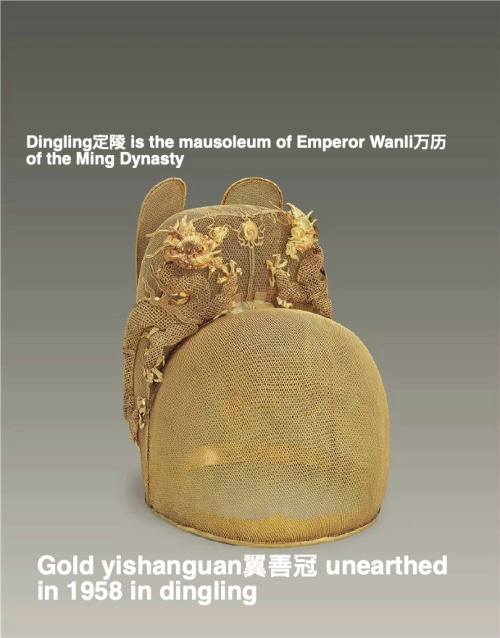
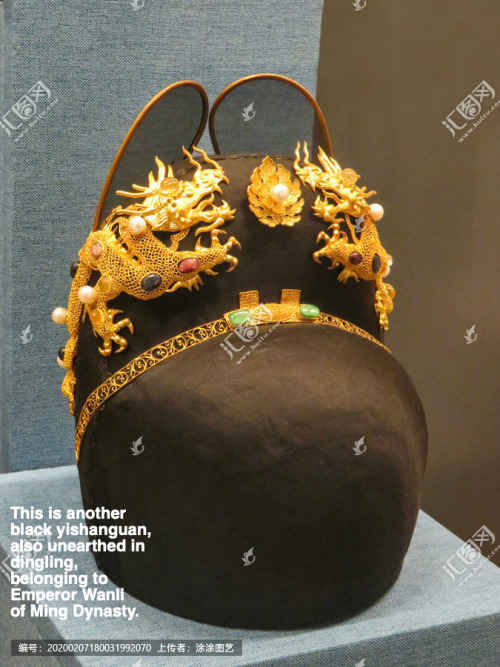
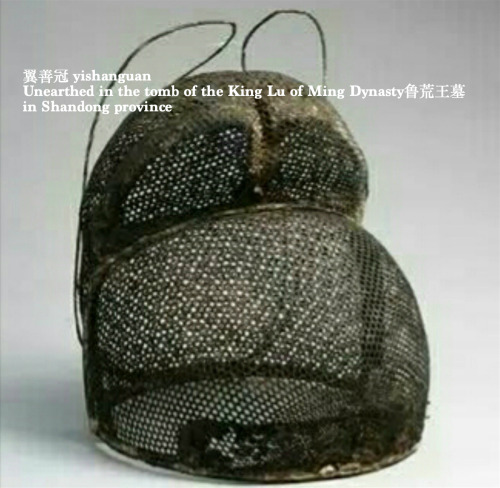

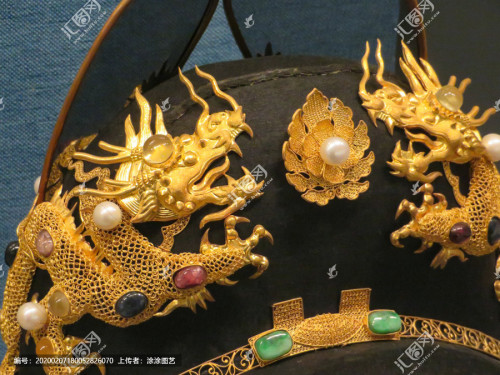
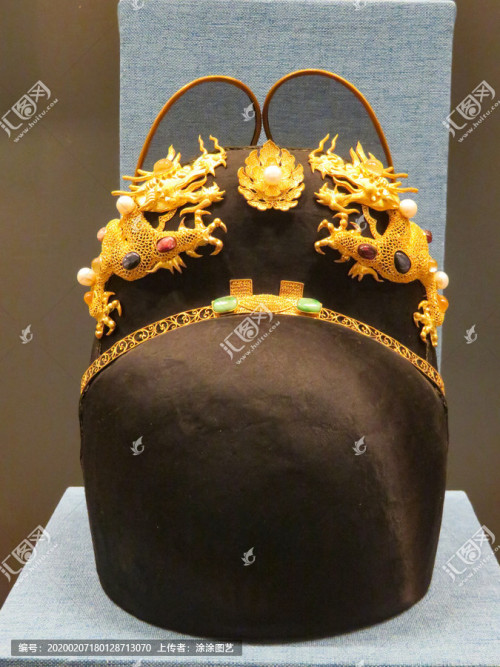
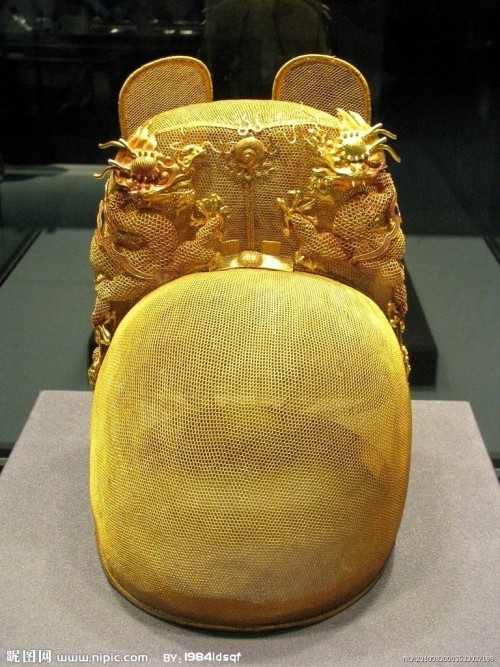
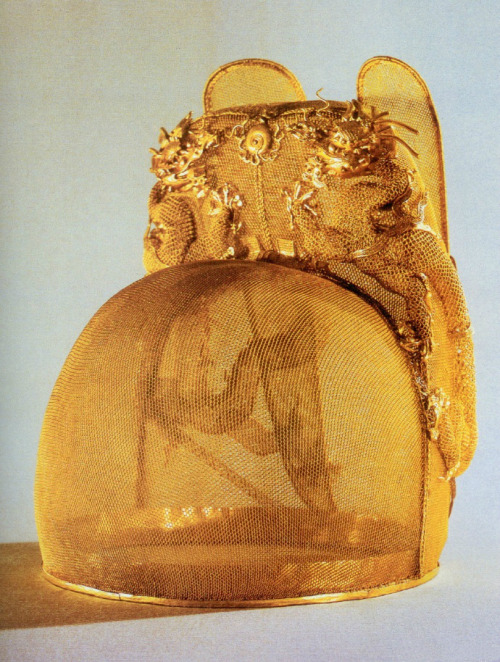


翼善冠yi-shan-guan, a type of hat in Chinese hanfu for ancient emperors and kings.
The term first appeared in Tang Dynasty and invented by Emperor Taizong of Tang. Quotes according to the official records of Tang, Song and Ming Dynasty. “唐贞观中,太宗采古制为翼善冠,自服之。朔望视朝,以常服及帛练裙襦通着之。若服袴褶,又与平巾帻通用。见宋王溥《唐会要.舆服上》﹑《旧唐书.舆服志》。明永乐三年,定皇帝常服冠以乌纱覆之,折角向上,亦名翼善冠。见《明史.舆服志二》。”
The yishanguan also has a corresponding hat of very similar shape in the official class and the commoner class, called wushamao乌纱帽, and in fact the yishanguan can be considered a variant of wushamao.
Actually yishanguan does have another name, called wu-sha-zhe-shang-jin乌纱折上巾, which means a hat made of black gauze with folded wings upward, and that’s what distinguishes it from an ordinary wushamao.
As for the origin of wushamao, it is futou幞头 in the Tang Dynasty. Futou in the Tang Dynasty originates from fujin幅巾 in the Han Dynasty. In the Han Dynasty, people wrapped their heads in a whole pair of soft cloth, so it was called fujin幅巾(It literally means a whole piece of cloth).

Some wushamao without wings, worn by officials, are similar in shape to the Yishanguan worn by the emperor. In Chinese historical dramas and costume dramas, jin-yi-wei锦衣卫, the imperial guards of secret service agent in the emperor’s court often wore this kind of wushamao without wings. And most wushamao have flush, long oval wings. There is a type of wushamao with particularly slender wings that is inherited from the Song Dynasty and is considered more formal.
The pictures below are ancient wushamao from the museums’ collection, as well as portraits of Ming Dynasty officials.


Because jinyiwei锦衣卫 resembles ancient agents, it is very popular among Chinese artists, who often draw characters wearing jinyiwei-style hanfu.

Then again, the following pictures are of Ming emperors wearing yishanguan. These pictures are accurate for reference.



Animated version drawn by 燕王WF

There are some ancient paintings from the Song and Ming dynasties, on which people are wearing various kinds of wushamao.






The above is the brief introduction about yishanguan and wushamao, after that I will also introduce more other types of hanfu hats.
Red paint on 1,000-year-old gold mask from Peru contains human blood proteins

Thirty years ago, archeologists excavated the tomb of an elite 40-50-year-old man from the Sicán culture of Peru, a society that predated the Incas. The man’s seated, upside-down skeleton was painted bright red, as was the gold mask covering his detached skull. Now, researchers reporting in ACS’ Journal of Proteome Research have analyzed the paint, finding that, in addition to a red pigment, it contains human blood and bird egg proteins.
The Sicán was a prominent culture that existed from the ninth to 14th centuries along the northern coast of modern Peru. During the Middle Sicán Period (about 900–1,100 A.D.), metallurgists produced a dazzling array of gold objects, many of which were buried in tombs of the elite class. In the early 1990s, a team of archaeologists and conservators led by Izumi Shimada excavated a tomb where an elite man’s seated skeleton was painted red and placed upside down at the center of the chamber. Read more.



A Russian zoo is home to a unique animal - the liger. It is half-lioness, half-tiger. Mother Zita is pictured licking her one month old liliger cub
Could invisible aliens really exist among us? An astrobiologist explains
by Samantha Rolfe

They probably won’t look anything like this. Martina Badini/Shutterstock
Life is pretty easy to recognise. It moves, it grows, it eats, it excretes, it reproduces. Simple. In biology, researchers often use the acronym “MRSGREN” to describe it. It stands for movement, respiration, sensitivity, growth, reproduction, excretion and nutrition.
But Helen Sharman, Britain’s first astronaut and a chemist at Imperial College London, recently said that alien lifeforms that are impossible to spot may be living among us. How could that be possible?
Keep reading
Ancient Bronze Age city reemerges from Iraq river after extreme drought

When an extreme drought caused a 3,400-year-old city to reemerge from a reservoir on the Tigris River in northern Iraq, archaeologists raced to excavate it before the water returned.
The Bronze Age city, at an archaeological site called Kemune, is a relic of the Mittani Empire (also spelled Mitanni Empire), an ancient kingdom that ruled parts of northern Mesopotamia from around 1500 B.C. to 1350 B.C. Researchers have long known of the remains of the city, but they can only investigate them during droughts.
Archaeologists partly excavated Kemune in 2018 and discovered a lost palace with 22-foot-high (7 meters) walls and chambers decorated in painted murals, Live Science previously reported. This time, researchers mapped most of the city, including an industrial complex and a multistory storage facility that likely held goods from all over the region, according to a statement released by the University of Tübingen in Germany. Read more.
Unveiling the Center of Our Milky Way Galaxy

We captured an extremely crisp infrared image of the center of our Milky Way galaxy. Spanning more than 600 light-years, this panorama reveals details within the dense swirls of gas and dust in high resolution, opening the door to future research into how massive stars are forming and what’s feeding the supermassive black hole at our galaxy’s core.

Among the features coming into focus are the jutting curves of the Arches Cluster containing the densest concentration of stars in our galaxy, as well as the Quintuplet Cluster with stars a million times brighter than our Sun. Our galaxy’s black hole takes shape with a glimpse of the fiery-looking ring of gas surrounding it.
The new view was made by the world’s largest airborne telescope, the Stratospheric Observatory for Infrared Astronomy, or SOFIA.
Make sure to follow us on Tumblr for your regular dose of space: http://nasa.tumblr.com.

shit man this got me emotional
Tabby's Star, not an Alien megastructure is the cause of dimming of the 'most mysterious star in the universe'

A team of more than 200 researchers, including Penn State Department of Astronomy and Astrophysics Assistant Professor Jason Wright and led by Louisiana State University’s Tabetha Boyajian, is one step closer to solving the mystery behind the “most mysterious star in the universe.” KIC 8462852, or “Tabby’s Star,” nicknamed after Boyajian, is otherwise an ordinary star, about 50 percent bigger and 1,000 degrees hotter than the Sun, and about than 1,000 light years away. However, it has been inexplicably dimming and brightening sporadically like no other. Several theories abound to explain the star’s unusual light patterns, including that an alien megastructure is orbiting the star.
Keep reading
the fact that jupiter and saturn haven’t been physically and observably this close since 1226 is so poetic bc you’re telling me i’m going to look up at and admire the same astronomical anomaly in the sky that someone hundreds and hundreds of years ago, with less knowledge of the stars and the planets than we have now, also looked up at and admired nonetheless. the past is long gone but the awareness of being connected to someone somewhere long ago thru the night sky is overwhelming me
-
 notfreedomfreesmart reblogged this · 3 weeks ago
notfreedomfreesmart reblogged this · 3 weeks ago -
 notfreedomfreesmart liked this · 3 weeks ago
notfreedomfreesmart liked this · 3 weeks ago -
 wetmeatchaperone liked this · 3 months ago
wetmeatchaperone liked this · 3 months ago -
 wyldshaped liked this · 4 months ago
wyldshaped liked this · 4 months ago -
 dysfunctionalgoddess liked this · 4 months ago
dysfunctionalgoddess liked this · 4 months ago -
 karul-the-vampire-demon-1099 liked this · 4 months ago
karul-the-vampire-demon-1099 liked this · 4 months ago -
 mycreativityislow liked this · 5 months ago
mycreativityislow liked this · 5 months ago -
 xmas-infinite reblogged this · 6 months ago
xmas-infinite reblogged this · 6 months ago -
 xmas-infinite liked this · 6 months ago
xmas-infinite liked this · 6 months ago -
 xxphoenix24xxxoxo liked this · 7 months ago
xxphoenix24xxxoxo liked this · 7 months ago -
 positivelyqueer liked this · 7 months ago
positivelyqueer liked this · 7 months ago -
 lucyhasnoidea reblogged this · 7 months ago
lucyhasnoidea reblogged this · 7 months ago -
 silasary reblogged this · 7 months ago
silasary reblogged this · 7 months ago -
 silasary liked this · 7 months ago
silasary liked this · 7 months ago -
 tea-cuz-why-not liked this · 7 months ago
tea-cuz-why-not liked this · 7 months ago -
 lesmurples liked this · 7 months ago
lesmurples liked this · 7 months ago -
 catwyk liked this · 7 months ago
catwyk liked this · 7 months ago -
 lights-at-night reblogged this · 7 months ago
lights-at-night reblogged this · 7 months ago -
 misspsychotic reblogged this · 7 months ago
misspsychotic reblogged this · 7 months ago -
 aussieroborous reblogged this · 7 months ago
aussieroborous reblogged this · 7 months ago -
 thecornmans liked this · 8 months ago
thecornmans liked this · 8 months ago -
 elluextl reblogged this · 8 months ago
elluextl reblogged this · 8 months ago -
 baconmancr reblogged this · 8 months ago
baconmancr reblogged this · 8 months ago -
 anotherdaysleeper liked this · 8 months ago
anotherdaysleeper liked this · 8 months ago -
 writer-unblocked reblogged this · 8 months ago
writer-unblocked reblogged this · 8 months ago -
 existing-still-forgotten liked this · 9 months ago
existing-still-forgotten liked this · 9 months ago -
 basalt-havic liked this · 10 months ago
basalt-havic liked this · 10 months ago -
 jrabson reblogged this · 10 months ago
jrabson reblogged this · 10 months ago -
 disaster-with-a-hat liked this · 10 months ago
disaster-with-a-hat liked this · 10 months ago -
 unstark reblogged this · 10 months ago
unstark reblogged this · 10 months ago -
 fangirlsays-kya liked this · 10 months ago
fangirlsays-kya liked this · 10 months ago -
 jjhayhay20 liked this · 10 months ago
jjhayhay20 liked this · 10 months ago -
 thereismusicinmysoul reblogged this · 10 months ago
thereismusicinmysoul reblogged this · 10 months ago -
 colorflaresinmyeyes reblogged this · 10 months ago
colorflaresinmyeyes reblogged this · 10 months ago -
 nocreativityleft liked this · 10 months ago
nocreativityleft liked this · 10 months ago -
 flying-butter reblogged this · 10 months ago
flying-butter reblogged this · 10 months ago -
 tumblehcendrum liked this · 10 months ago
tumblehcendrum liked this · 10 months ago -
 wheresonichedgehogwnt liked this · 10 months ago
wheresonichedgehogwnt liked this · 10 months ago -
 charcoalrose liked this · 10 months ago
charcoalrose liked this · 10 months ago -
 booksteaandlsd liked this · 10 months ago
booksteaandlsd liked this · 10 months ago -
 bethlammen reblogged this · 10 months ago
bethlammen reblogged this · 10 months ago -
 lightblueminecraftorchid liked this · 10 months ago
lightblueminecraftorchid liked this · 10 months ago -
 ourladyoftheironmasque liked this · 10 months ago
ourladyoftheironmasque liked this · 10 months ago -
 naturallysuperbands reblogged this · 10 months ago
naturallysuperbands reblogged this · 10 months ago -
 naturallysuperbands liked this · 10 months ago
naturallysuperbands liked this · 10 months ago -
 snazzy-hats-and-adhd reblogged this · 10 months ago
snazzy-hats-and-adhd reblogged this · 10 months ago -
 snazzy-hats-and-adhd liked this · 10 months ago
snazzy-hats-and-adhd liked this · 10 months ago -
 thevoiceinyourheadx liked this · 10 months ago
thevoiceinyourheadx liked this · 10 months ago -
 serenityinreading reblogged this · 10 months ago
serenityinreading reblogged this · 10 months ago
